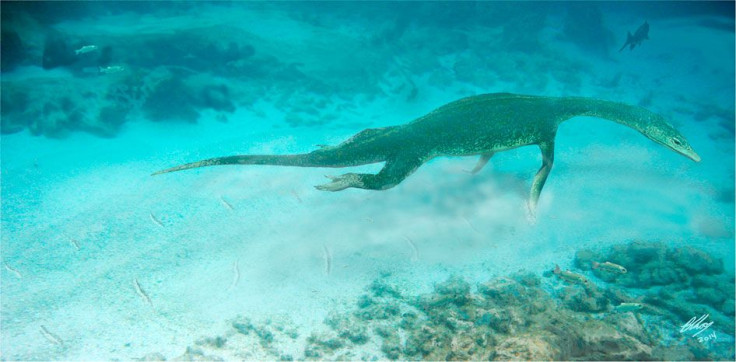Newly Discovered Trackways Could Explain Ancient Sea Reptiles’ Swimming Skills

Scientists from the University of Bristol have discovered trackways formed on an ancient seabed, which could solve the mystery of how ancient marine reptiles such as nothosaurs, which lived during the age of the dinosaurs, used to swim and survive in the deep waters of pre-historic seas.
The scientists said in a new study, published in the journal Nature Communications on Wednesday, that during the Mesozoic era, about 252 to 66 million years ago, the seas were full of reptiles like the nothosaur. While scientists knew that these creatures were predators with long bodies and paddle-like limbs, exactly how they used their limbs to propel themselves through water was unknown. Now, recently discovered trackways on an ancient seabed in Yunnan province in southwestern China, have helped scientists find an answer.
“We interpret the tracks as foraging trails,” Qiyue Zhang from Chengdu Center of China Geological Survey and the study’s lead author, said in a statement. “The nothosaur was a predator, and this was a smart way to feed. As its paddles scooped out the soft mud, they probably disturbed fishes and shrimps, which it snapped up with needle-sharp teeth.”
According to the scientists, the tracks included slots in the mud arranged in pairs in long series of 10 to 50, which were followed by straight lines and sweeping curves. The size of the markings and the gap between each pair indicated that they were created by nothosaurs with their forelimbs. The details also helped the scientists conclude that the size of these creatures could have ranged between 3 feet to nearly 10 feet.
The findings “demonstrate that these reptiles moved over the seafloor by rowing their forelimbs in unison, the first direct evidence of how these creatures propelled themselves in the water,” the scientists said, in the statement, adding that two types of nothosaurs, the large Nothosaurus and the smaller Lariosaurus, could be the ones that made the tracks.
Scientists believe that the new discovery will help them better understand how life recovered on Earth after the devastating Permo-Triassic mass-extinction event, commonly known as the Great Dying, which occurred about 252 million years ago.
“Here we see a detailed snapshot of how life was within 8 million years of the mass extinction,” Shixue Hu, the study’s co-author, said in the statement. “It took all that time for the Earth to settle down from the cataclysm, and the arrival of these large, complex marine predators shows us the ecosystems had finally rebuilt themselves, and life could be said to have recovered from the crisis.”
© Copyright IBTimes 2024. All rights reserved.






















